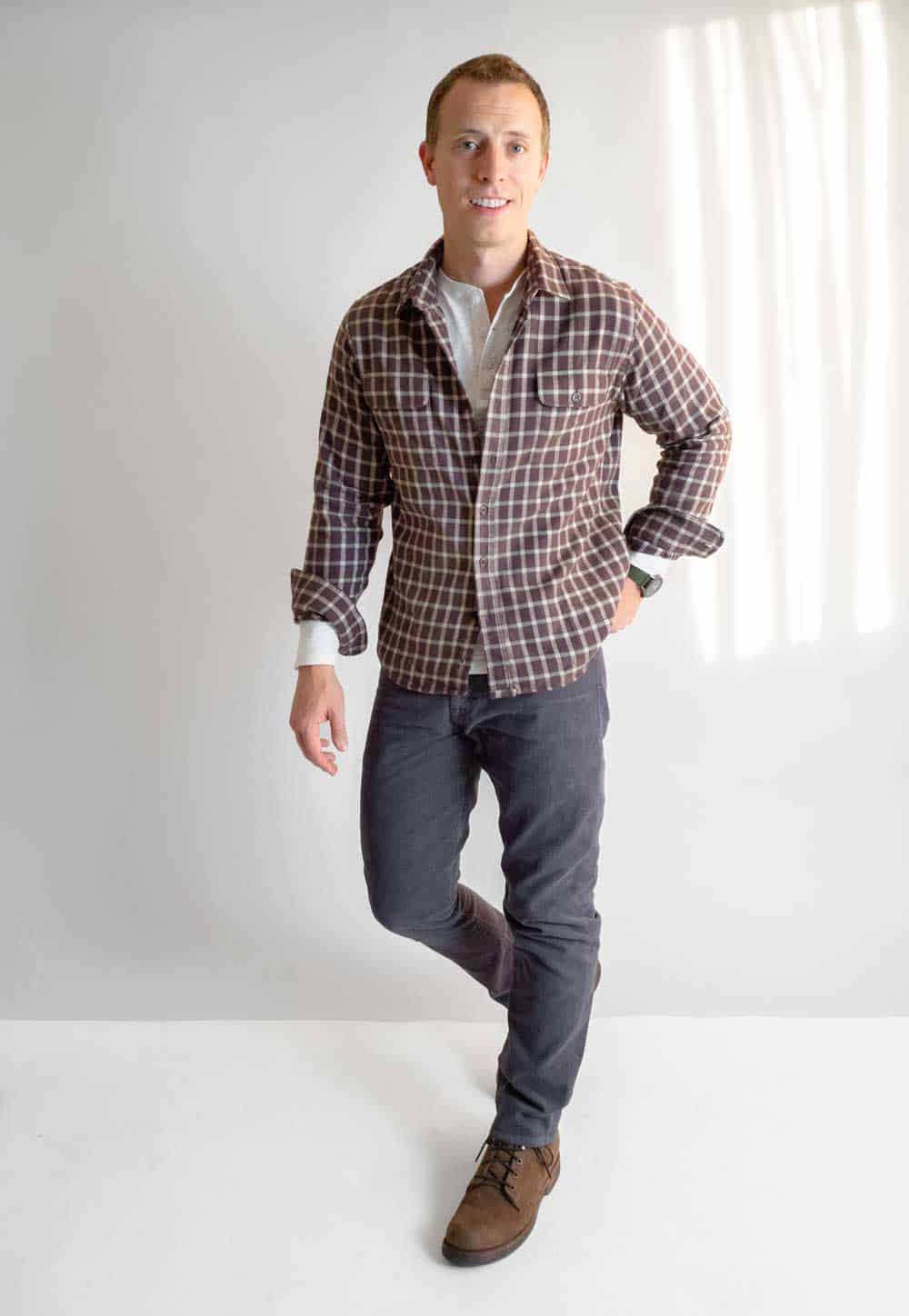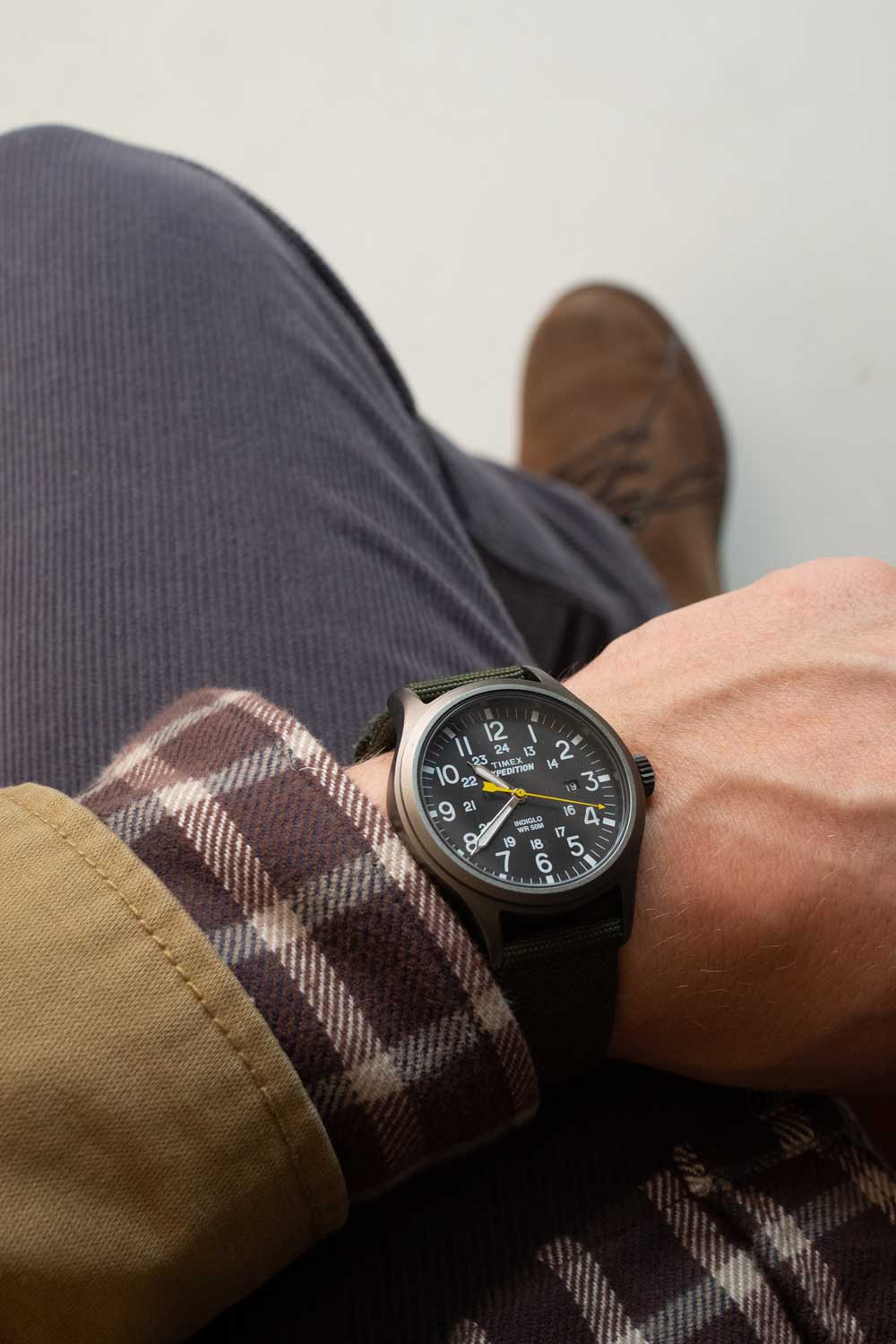
 |
This post is in partnership with Peter Manning. Clothes designed for the not-so-tall guy. Click here to experience the difference proper fit makes and save 20% off your first order with ‘primer1118'!
What is this? |
One of the hardest times of year to dress for is when it's 100 degrees outside. Second only to that is probably…right now. Much of the country wakes up when it's 40 degrees then only a few hours later finds themselves in 70-80 degree weather.
If you wear a cable knit sweater and a heavy, puffy coat you're nice and warm in the morning and sweltering by noon. If you dress for noon, you're miserable and freezing in the morning.
The solution isn't to dress for either-or, it's dressing for both. But how do you dress well for both 40 degrees and 90 degrees?
Lighter layers, and more of them.
This Getup provides textbook examples of a few things.
First, lighter or thinner doesn't only mean spring and summer. Come April, retailers begin pushing ‘spring jackets' – the usual parkas, fleeces, and anoraks. They're spring jackets because they keep you dry without overheating you. But that's a pretty limiting, surface-level use for them.
It's true on their own they would be inadequate in fighting more winter-y weather. On their own. When teamed up with other light layers they prove to be even more powerful than a puffy, heavy winter jacket on its own – Like a sartorial Avengers.

Flannel-lined Cotton Field Jacket, $142 / 11oz Stretch Cotton Hoodie, $71 / Flannel Work Shirt, $78 / Slub Cotton Henley, $54 / Slim Corduroy Pants, $78 / Timex Expedition, $36 / Full Grain Leather Boots, $168
Take for example, this Tribeca Field Jacket. If you’re a regular reader, you’ll remember seeing this a few times over the years. The tan color, material, and classic design make it one of those few jackets that look sharp when keeping you warm on your way to a corporate work event, just as it does if you’re out of the office and working in the field. An internal elastic drawstring guarantees a tailored silhouette by allowing you to reduce unneeded bulk on the fly, depending on how many layers you’re wearing. A thin flannel lining manages temperature without extra thickness.
Another thing this look proves? Yes, you can wear a hoodie and not feel like you’re poorly dressed. Sweatshirts have gotten a bum rap from those who encourage men to try harder and take better pride in their appearance. It’s true that many a lazy man turns to a sweatshirt as a default temperature-regulating outer layer. But that doesn’t mean the intentional man, the one who understands the power and importance that controlling his appearance provides, can’t also wear them. Here, the super soft and lined navy hoodie adds a pop of color, but more importantly, an easily removed layer.

Flannel Work Shirt, $78 / Slub Cotton Henley, $54 / Slim Corduroy Pants, $78 / Timex Expedition, $36 / Full Grain Leather Boots, $168
It’s also a clear example of how a single item can drastically alter the dressiness of an outfit. With the hoodie? A rugged casual outfit comprised of classic fall and winter items. Without the hoodie? An outfit most men could wear to a smart casual office, evening out with friends or a casual date, or a family holiday dinner at a relative’s house.
Text Book Lesson #3: Flannel doesn’t have to look like a lumberjack costume. I was excited to introduce this reddish-brown flannel into my arsenal because, while I love me a buffalo plaid, it can be a bold statement. This subtle pattern of red, charcoal, and cream is handsome regardless of how dressed up you want to be or whether your personal style is rugged or street, preppy or minimalist.
Corduroy pants are a bit surprising to me. Nobody seems to have a problem with them but they’re often left out of the list of pant options. Jeans, twill pants, chinos, dress pants. But corduroys offer an alternative that doesn’t make a statement. They’re not inherently more dressy than jeans or chinos. They’re time-tested cooler weather wear, so they’re not fashion forward. Not only are they comfortable and viable, they add another important quality that is essential to upping your style: Texture. Outside of a pair of wool flannel trousers, men don’t get a lot of opportunities to include texture in the bottom half. A fine wale corduroy accomplishes just that, without being aggressive enough that you’d need to consider counter-balancing it up top.

Flannel-lined Cotton Field Jacket, $142 / Flannel Work Shirt, $78 / Slim Corduroy Pants, $78 / Timex Expedition, $36 / Full Grain Leather Boots, $168
And the final layer: the white henley. Swapping your base layer t-shirt for a henley is one of the single, easiest upgrades you can make to a look. The henley button placket complements the unbuttoned shirt placket. The wonderfully textured slub cotton of this henley makes it a standout worn on its own or as a layer.
All of these items come from Peter Manning, a brand tackling a big problem in the men’s retail world. You can probably list 3 household name stores that cater to the unique sizing challenges of men who are some combination of taller height and wider girth that mainstream stores don’t offer. But where are guys supposed to go if they’re looking for a waist or inseam below a 30 or properly proportioned sleeves and lapel widths for smaller torsos?
Humans come in all sorts of shapes. And it’s not like brands don’t know this or can’t accommodate it: Walk into any women’s clothing store and you’ll find whole sections for petites, juniors, plus sizes, maternity, petite plus sizes. The men’s section? Four standardized shirt sizes and half of them are sold out for anything good. What gives?
Peter Manning offers an alternative for classic items with modern touches and fits for any guy of any shape under 6’. I’m 5’11” a perfectly average height but with a short inseam and a preference for quarter to half break in my pants makes finding the perfect pants a challenge. A thin but athletic torso needs items that can fit my shoulders and arm width without 9 extra miles of shirt length. With a custom sizing system that can help dress men starting at 5’1” and 105 lbs on up to 5’11”, men finally have access to stylish items not based on the average height and width of the entire American population. Primer readers save 20% off their first order with PRIMER1118!
Like this look? Please share it!
I'll be in the comments, come chat!

















